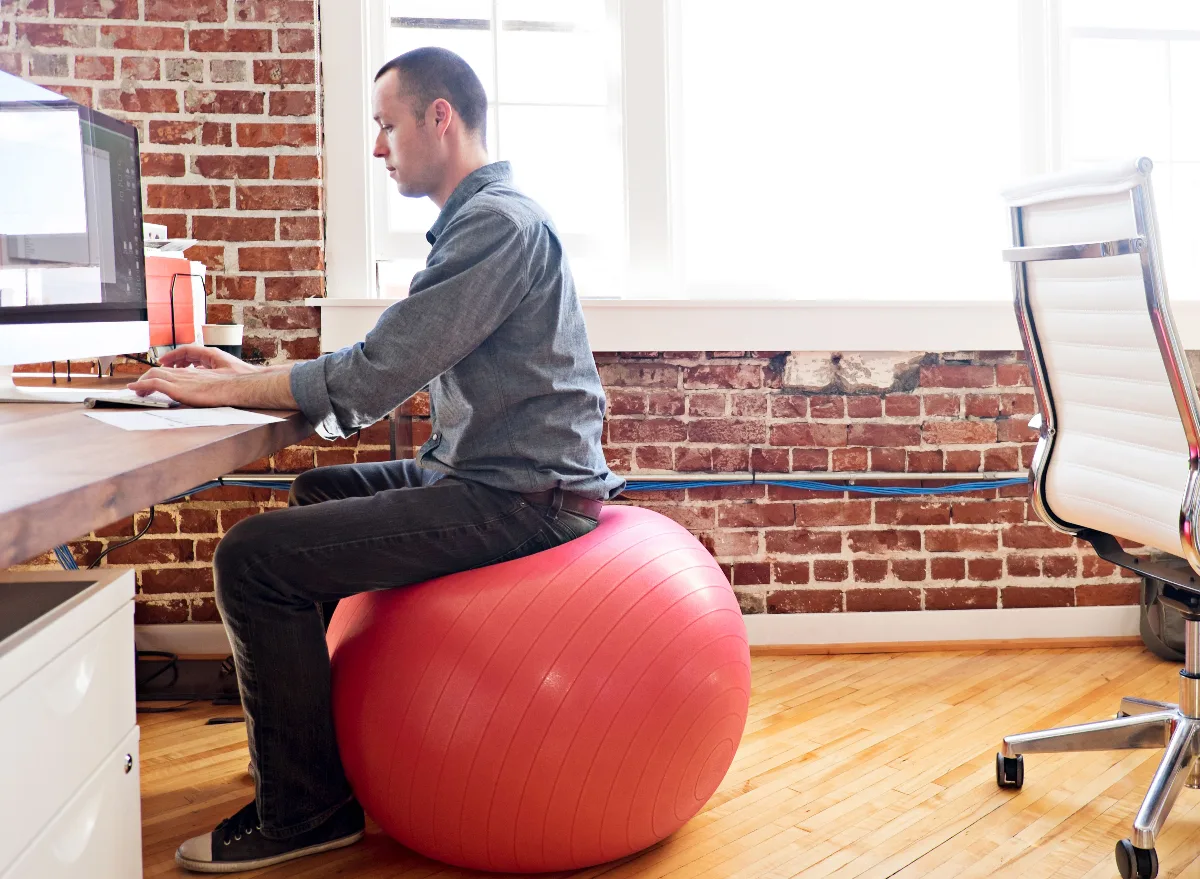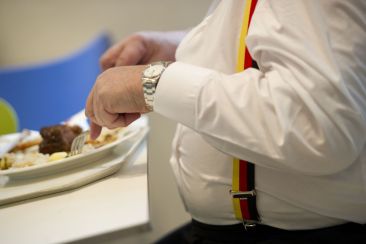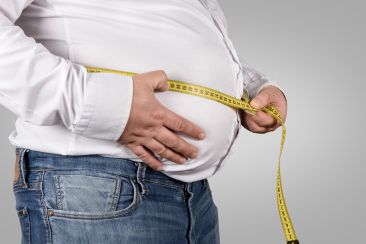
Burn Calories While Working
Burn Calories While Working
These days, most of us spend hours sitting down while we work – whether it’s at an office desk or the dining table at home. It might feel harmless, but sitting for too long can affect our health. Studies have found that being still for many hours can lead to weight gain, lower fitness, and even raise the risk of illnesses like heart disease and type 2 diabetes (BMJ, 2015).
The good news is you don’t have to join a gym or run for miles to burn more calories. Simply moving a bit more during the day can make a big difference. Scientists call this Non-Exercise Activity Thermogenesis (NEAT). That’s just a fancy way of saying “the energy your body uses for everyday activities” – like walking to the printer, tapping your foot, standing while talking on the phone, or taking the stairs instead of the lift. Researchers at the Mayo Clinic found that NEAT can vary by up to 2,000 calories a day between two people of the same size, simply because one moves more often than the other (Levine et al., 2005). This means small actions during your working hours really can add up.
In this blog, we’ll look at:
- How your body burns calories while you work,
- Easy desk-friendly ways to move more,
- The difference between sitting and standing,
- How to turn these ideas into daily habits.
By the end, you’ll have a clear, science-based plan to help you burn more calories – without breaking a sweat.
The Problem with Desk Jobs
Multiple problems can arise from a desk job. These include:
- An inappropriate or disturbing posture
- A higher level of stress
- Depression and other mental health problems
- Diseases related to the cardiovascular system and other medical conditions
Additionally, extended seating time at a desk job could put you at risk for less obvious health risks.
How You Burn Calories at Work
Basal Metabolic Rate & Everyday Movement
Even if you’re sitting completely still, your body is still working hard to keep you alive. It’s keeping your heart beating, your lungs breathing, your brain thinking, and your body warm. The energy your body uses for these jobs is called your Basal Metabolic Rate (BMR).
Your BMR is like your body’s “basic energy bill,” and it takes up most of the calories you burn in a day, usually about 60–75% (NHS).
On top of your BMR, you burn more calories through Non-Exercise Activity Thermogenesis (NEAT). This is just a fancy way of saying “all the small movements you do without thinking”. It can include:
- Walking to the kitchen for a drink,
- Standing up to talk to someone,
- Shuffling in your seat,
- Tapping your foot,
- Carrying something from one room to another.
Scientists at the Mayo Clinic found that NEAT can vary significantly from person to person – in some cases, by as much as 2,000 calories a day (Levine et al., 2005). That’s the same as running for over three hours! It shoóws how powerful small, regular movements can be.
The Impact of Standing vs Sitting
Standing uses more muscles than sitting, so it burns a little more energy. Studies show that standing can burn about 0.15 more calories per minute than sitting (Harvard Health). That might not sound like much, but over six hours, it adds up to about 54 extra calories – roughly the same as one biscuit.
Some research also found that men may burn almost twice as many calories as women when standing, because men usually have more muscle.
Still, standing isn’t a magic trick for losing weight. A study from the University of Bath found the difference might be closer to nine calories per hour (University of Bath). The best results come when you mix standing with other small movements like walking or stretching.
Calories Burned per Hour at Work
|
Activity |
Calories per Hour* |
Extra Notes |
|
Sitting |
~65–85 kcal |
Standard desk work with little movement |
|
Standing |
~74–100 kcal |
Burns more because it uses your core and leg muscles |
|
Light fidgeting |
+100–800 kcal/day |
Can be done sitting or standing; the amount depends on how much you move |
Health Risks of Being Inactive
A desk job comes with several health risks. Below are a few examples:
- The blue light emitted by computer screens and other electronic devices can damage your vision.
- A great deal of time is spent at the desk by employees. As a result of its nature, the job is particularly conducive to bacterial growth. Despite sneezing as little as five or ten times a day, your keyboard will continue to collect germs, and you won't even know it's happening. You may be exposed to germs and bacteria constantly.
- Desk jobs also present the challenge of mental fatigue. Irritability, fatigue, and mental fog can occur after spending too much time in front of a computer screen.
- When you sit for a long time and satisfy hunger pangs with snacks
Desk-Friendly Move Hacks
You don’t need a gym to burn calories. You can move your body and stay active without leaving your desk. These small moves can help you feel more awake, keep your muscles working, and boost your energy levels during the day.
Easy Desk Exercises
- Chair squats: Stand up from your chair without using your hands, then slowly sit back down. Try 10 in a row.
- Desk push-ups: Put your hands on the edge of your desk, step back a little, and push your chest towards the desk, then back up.
- Wall sits: Stand with your back against a wall, slide down as if you’re sitting on a chair, and hold for 20–30 seconds.
- Calf raises: Stand up and lift your heels so you’re on your tiptoes, then lower them again.
Sit on a Stability Ball
If you swap your chair for a big exercise ball, your tummy and back muscles work to keep you balanced. This can help strengthen your core muscles while you work (Harvard Health).
Squeeze Your Muscles (Isometric Exercises)
These are moves where you tighten your muscles without moving much.
- Glute squeezes: Squeeze your bum muscles for 5 seconds, then relax. Do this 10 times.
- Ab holds: Pull in your tummy muscles and hold for 5–10 seconds. Repeat a few times an hour.
Stretch at Your Desk
Stretching helps your blood flow, stops stiffness, and can burn a few extra calories.
- Seated twist: Sit tall, put your right hand on the back of your chair, and turn your upper body. Hold for 10 seconds, then switch sides.
- Shoulder rolls: Slowly roll your shoulders forward 5 times, then back 5 times.
- Crescent moon stretch: Raise your arms over your head, lean to one side, then the other.
Movement Beyond Your Seat
The easiest way to burn more calories at work is to get up and move occasionally. You don’t need to do long workouts – short bursts of movement can add up over the day.
Take the Stairs
If there are stairs where you work, use them instead of the lift. Walking up and down stairs uses more muscles and burns more energy than walking on flat ground. Even a few trips a day will make a difference.
Walking Meetings
If you have a meeting, try walking while you talk. It keeps you moving and can help you think more clearly. If you work from home, walk around your house or garden while on a phone or video call.
Active Breaks
Use part of your lunch or tea break to walk around. You could go outside, walk to a park, or just take a lap of the office.
Walk Instead of Messaging
Instead of emailing or messaging a colleague nearby, walk over to speak to them. You’ll move more, and it’s a nice way to connect in person.
Try Movement Gadgets
- Under-desk pedals: You can pedal gently while you work.
- Treadmill desk: Let's you walk slowly while using your computer.
- Balance board: Makes you shift your weight and use your muscles while standing.
Putting It All Together: Daily Calorie-Burn Estimate
Let’s see how small actions during the day can add up. Even if each movement burns just a few calories, they can make a big difference when you do them often.
Here’s an example of what an office worker could burn in a typical day by making small changes:
Extra Calories Burned in One Workday
|
Activity |
Time Spent |
Extra Calories Burned* |
|
Standing instead of sitting |
2 hours |
~30 kcal |
|
Walking during two short breaks |
20 mins |
~80 kcal |
|
Taking the stairs 4 times |
10 mins |
~50 kcal |
|
Light fidgeting through the day |
— |
~150 kcal |
|
3 short bursts of exercise (2 mins each) |
6 mins |
~30 kcal |
|
Total extra calories |
— |
~340 kcal |
Why This Matters
Burning an extra 340 calories a day adds up to more than 1,500 calories a week. Over time, this can help you manage your weight, stay healthier, and feel more active, without needing a long workout.
Frequently Asked Questions
Can I burn calories while sitting at my desk at work
Yes, you can burn calories while sitting at your desk by using small movements like tapping your feet, fidgeting, seated stretches, and using a stability ball chair. These actions increase your non-exercise activity thermogenesis (NEAT), which helps burn extra energy during the workday.
How many calories can I burn using a standing desk at work
Using a standing desk can help you burn around 0.15 more calories per minute than sitting. Over a few hours, this could add up to about 50 extra calories burned at work, especially when combined with light movements or stretching.
What are the best desk exercises to burn calories while working
Some of the best desk exercises to burn calories while working include chair squats, desk push-ups, calf raises, and seated twists. These moves are easy to do in short bursts without interrupting your workflow.
Can micro-workouts help me burn calories during office hours
Yes, micro-workouts like jumping jacks, high knees, or resistance band exercises for 1–5 minutes can boost your heart rate and calorie burn. Doing a few mini-bursts of exercise throughout your workday can add up to significant energy expenditure.
Is walking during breaks a good way to burn calories at work
Walking during breaks is one of the simplest and most effective ways to burn calories at work. Just 10–20 minutes of brisk walking can burn 40–80 calories and also improve mood and focus.
Do under-desk pedal machines help burn calories at work
Yes, under-desk pedal machines let you keep moving while working, helping you burn 100–300 extra calories a day depending on your speed and duration. They’re great for keeping your legs active without leaving your workstation.
How can I burn more calories working from home
You can burn more calories working from home by using a standing desk, taking walking calls, adding stair climbs, and fitting in quick bodyweight exercises between tasks. The flexibility of home working makes it easier to move often.
Is fidgeting an effective way to increase calorie burn at work
Fidgeting can increase your daily calorie burn by 100–800 calories, depending on how much you move. Even small actions like tapping your fingers, bouncing your leg, or shifting your posture help keep your body active.
Lose Weight with Weight Loss Coach
A first-of-its-kind weight loss program, Weightloss Coach incorporates proven science into curating methodologies. You can lose unwanted weight and achieve your health goals through our foolproof, practical plans. With the help of our clients and our team, we provide a range of weight loss options, including surgeries, natural methods, medical procedures, and dietary changes.
We have a dedicated and specialised team of experts at your disposal whenever you need assistance with your weight loss goals, even if you have a sedentary desk job. Our clinics are available virtually, and you can consult with our doctors there.


